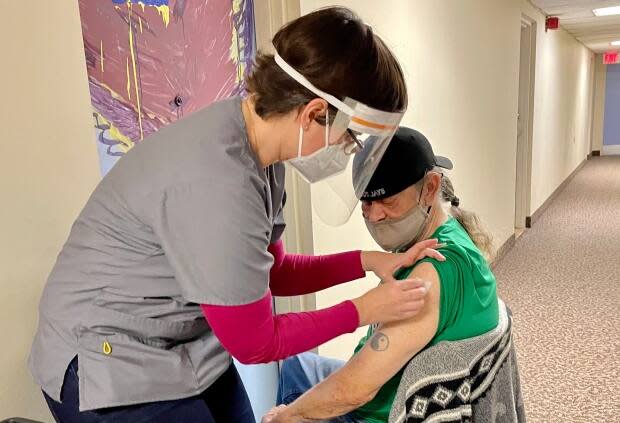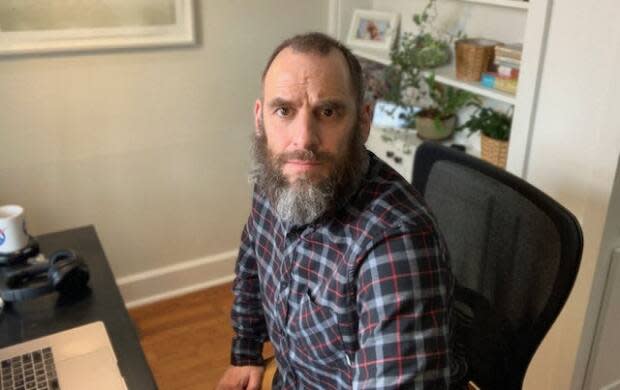Officials say 90% of population needs vaccine to reach herd immunity

Like the last leg of a marathon, public health officials say reaching the final segment of the unvaccinated population will be a grind as Ottawa tries to attain herd immunity — when enough of the population is protected against COVID-19.
The city of Ottawa has set a daunting target to fully vaccinate 90 per cent of its population, including those still not eligible to be vaccinated, which has eluded most regions around the world.
As of July 23, 73 per cent of the city's entire population had received at least one dose of vaccine, slightly higher than the Ontario rate of 69 per cent, and one of the highest vaccination rates for first doses among cities around the world.
Ontario's first-shot vaccination rate has dropped from a high of six per cent per week in May to below one per cent in July, and it continues to trend downward. That means it will take longer to inoculate the remaining portion of the unvaccinated population — likely a venture that continues into 2022.
"I think I can't understate how important it is to get very high levels of vaccination," said Dr. Trevor Arnason of Ottawa Public Health.
"If we head into the fall with vaccination where it is now, we're definitely going to see outbreaks."

Vaccination targets need to change
Ontario, which has now been in Stage 3 of the reopening plan for 10 days, must reach 80 per cent of its eligible population with at least one dose, and 75 per cent with both doses, to consider removing all public health restrictions.
Some public health experts believe that target is not high enough due to the growing number of cases of the delta variant and the potential for breakthrough cases.
"We need to establish herd immunity, and we would need to be at a higher level: 85, 90 per cent vaccination rates," explained Dr. Paul Roumeliotis, the medical officer of health for the Eastern Ontario Health Unit, who also heads a group of public health units across Ontario.
Roumeliotis and Arnason say restrictions could return in the fall if delta spreads, even if they're not as strict as those we've seen throughout the pandemic. Ontario public health officials hope to avoid a spike in cases seen during the reopening in the U.K., Israel, and the United States.
A comparable situation exists in the Netherlands, which has a population only slightly larger than Ontario, and similar vaccination rates. There, cases jumped to 10,000 per day only a few weeks after reopening due to the delta variant, which is now responsible for more than 80 per cent of new infections in Ontario.
WATCH: Getting people 'through the doors' biggest part of vaccinating holdouts, doctor says:
'Get them through the doors'
Officials estimate anywhere from five to 10 per cent of the population will never get the COVID-19 vaccine, but they need to target those who will roll up their sleeves to help avoid a "pandemic of the unvaccinated."
Health-care workers at community clinics, including one at Lansdowne in Ottawa, have used lulls in the day to approach people nearby about getting the vaccine.
"The first thing is to get them through the doors, that's the hardest part," said Dr. Lorne Wiesenfeld, an emergency physician at The Ottawa Hospital who has also spent time administering the vaccine.
"You want to make it easy. Just remove one barrier that may hinder them, encouraging them in a non-judgmental way."
Half of Ottawa's community clinics closed last week as Ottawa Public Health refocused its outreach by offering mobile vaccine clinics at workplaces, community organizations and places of worship, as well as pop-up clinics throughout the city to target young adults.
in Ottawa, only 72 per cent of the population aged 18-29 have the first dose, which is the lowest of any age demographic. That is followed closely by 73 per cent of those aged 30-39 with at least one dose.

Public health messaging difficult with low case numbers
The "receptivity" of public health messaging about the risk of a delta resurgence is non-existent when the number of active cases of COVID-19 remains low and pandemic fatigue persists, according to Doug Manuel, senior scientist at the Ottawa Hospital Research Institute, and a member of Ontario's COVID-19 Science Advisory Table.
People may only begin to become more sensitive to messaging if cases begin to rise, as they have in the U.K. and Israel, Manuel said.
Public health officials believe the 90 per cent goal is attainable partly because Ottawa has traditionally reached higher rates of vaccination for the flu and child immunization programs.
Arnason says once children younger than 12 become eligible, which could happen in the fall, the city could see a bump of about 10 per cent with at least one dose.
"I think Ottawa is one of those places where there's no reason why we can't be a world leader," he said.

 Yahoo Movies
Yahoo Movies 